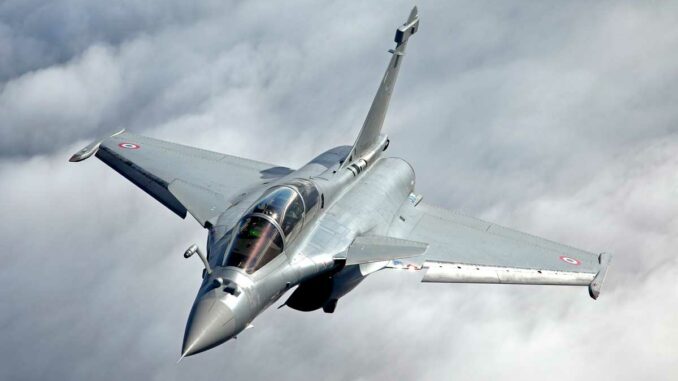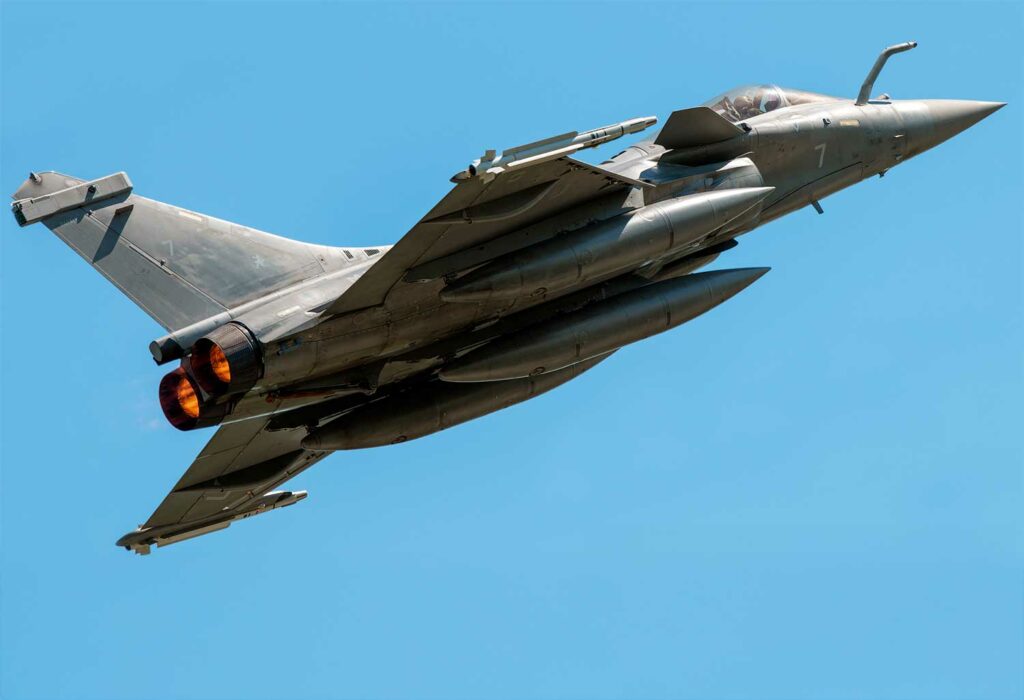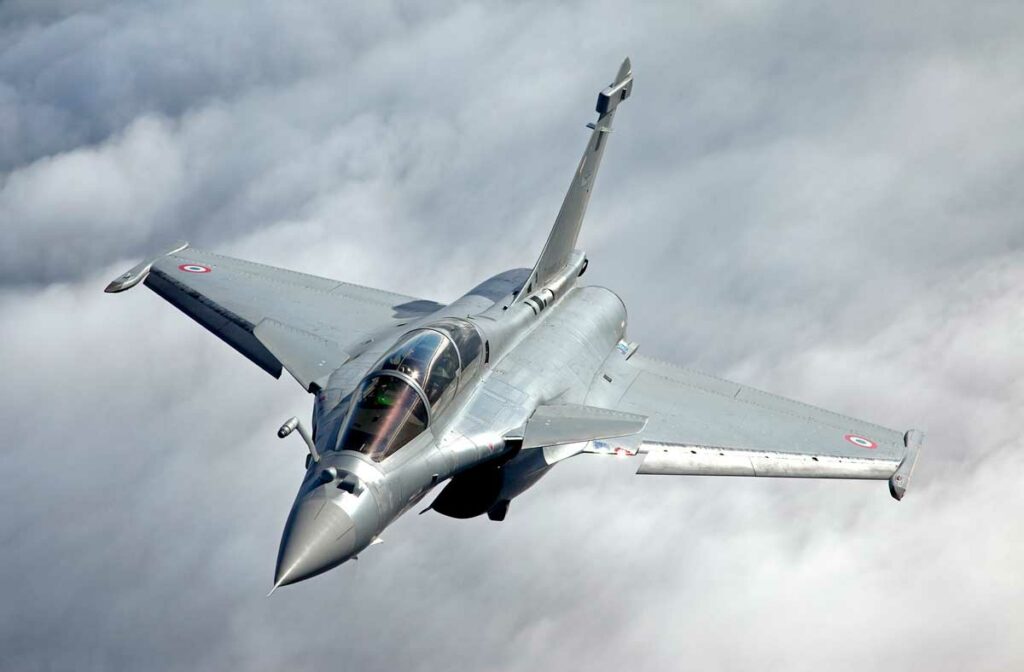
Discover 10 surprising and little-known facts about the Rafale, one of the world’s most sophisticated multi-role fighter jets.
An aircraft capable of striking… with a nuclear weapon
One of the few operational fighter jets capable of carrying out an autonomous nuclear strike, the Rafale stands out thanks to its integration of the ASMP-A (Air-Sol Moyenne Portée-Amélioré) missile. This supersonic missile with a thermonuclear warhead and a range of 500 km is part of France’s nuclear deterrent force. The two-seater Rafale B, used by the French Air Force for this mission, has the navigation, low-altitude penetration and security systems necessary to carry out such a strategic mission.
An electronic warfare system developed without foreign assistance
SPECTRA is probably one of the most advanced systems ever installed on a fighter jet. It combines electromagnetic and infrared sensors, radar detectors, jammers, and decoy launchers capable of automatically responding to threats. This system is designed entirely in France by Thales, MBDA and Dassault, giving Paris total independence in the management of its electronic warfare capabilities — unlike other powers that depend on foreign subcontractors.

An aircraft that can be refueled… by another Rafale
Few fighter jets are capable of serving as in-flight refuelers. The Rafale, thanks to a buddy-buddy refueling pod, can transfer fuel to another Rafale. This capability is particularly useful during operations in remote areas or when heavy refuelers such as the A330 MRTT are not available. This gives the aircraft increased tactical autonomy, particularly in special operations or on aircraft carriers.
Impressive naval takeoff performance
The naval version of the Rafale, the Rafale M, was designed to withstand the violent shocks of catapult launches and landings. But it can also take off from aircraft carriers without steam catapults, using a ski jump. This feature has been tested in India, demonstrating its versatility on different types of aircraft carriers, unlike some competitors that require specific infrastructure.
Faster entry into service than its competitors
While Europe was developing the Eurofighter Typhoon in cooperation, France chose to go it alone with Dassault. As a result, the Rafale A prototype flew in 1986, well ahead of its European counterparts. This head start made it possible to validate unstable but agile flight technologies, such as the delta wing and canard wings, more quickly. The Rafale entered operational service in 2001, compared with 2003-2004 for the Typhoon.
A discreet radar signature without being stealth
Unlike the F-35 or F-22, the Rafale is not a “stealth” aircraft in the strict sense of the term. However, it features a smooth aerodynamic design, extensive use of composite materials (approximately 70% of its front surface area), and a passive jamming system that significantly reduces its radar signature. This makes it more difficult to detect than a conventional fighter, while maintaining its maneuverability and high payload capacity.
An aircraft designed to never leave the controls
The Rafale’s cockpit is designed to allow the pilot to manage everything without letting go of the controls. This concept, called HOTAS (Hands On Throttle And Stick), coupled with a touchscreen interface, head-up display and voice commands (tested but then abandoned), reduces the workload during missions. The aim is to optimize the pilot’s responsiveness in high-stress situations.

An exceptional payload
The Rafale can carry up to 9.5 tons of payload, distributed across 14 hardpoints (13 for the naval version). This is more than some heavier aircraft such as the F/A-18. It can simultaneously carry air-to-air and air-to-ground missiles, guided bombs, external fuel tanks, designation pods (such as TALIOS), and even electronic warfare pods. This makes it a true multi-role aircraft capable of carrying out several missions during the same flight.
An automated Rafale was once considered
Before the European nEUROn program, Dassault considered the possibility of an unmanned Rafale. The idea was to develop a derivative version capable of reconnaissance or penetration into defended environments, piloted remotely or autonomously. The project was abandoned in favor of the nEUROn stealth drone, but it highlights the modularity of the Rafale airframe.
Unique and varied operational experience
Few aircraft have operated in so many different environments. Since entering service, the Rafale has been deployed in Afghanistan, Libya, Mali, Syria, Iraq, and over the South China Sea. It has carried out high-precision strikes, air superiority missions, maritime interceptions, and deterrence patrols. This confirms its suitability for modern warfare, both high-intensity and asymmetric.
War Wings Daily is an independant magazine.